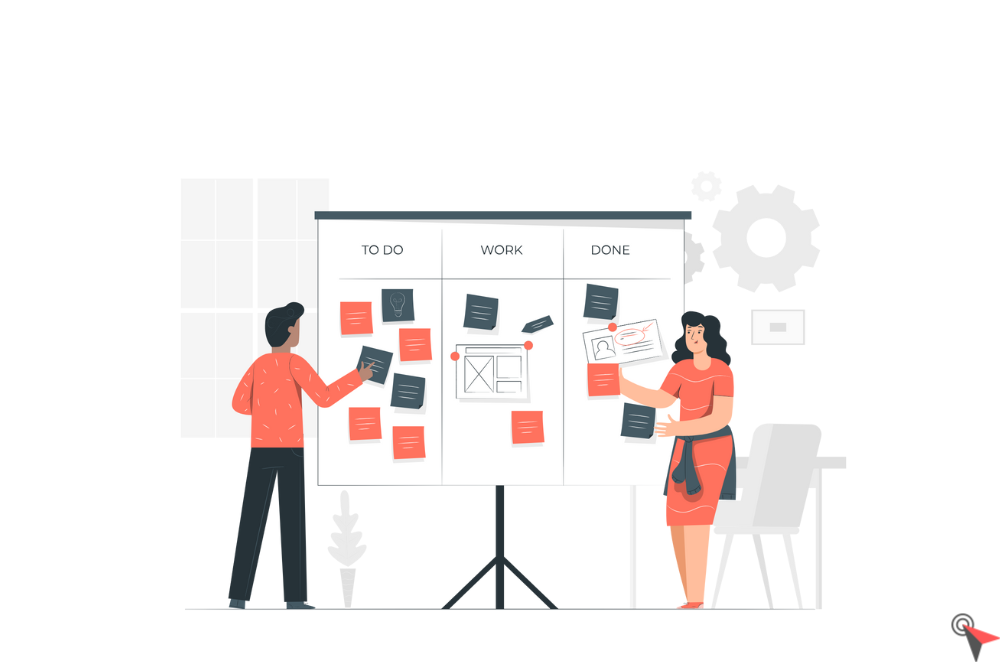Planning a Project: Best Tools and Methods in 2025
January 5, 2023


To achieve the set objective, Planning a Project in planning is an essential phase. Without this, nothing being mastered, the project manager and his team would sail by sight.
In fact, the objective of planning is to organize the progress of the stages of the project over time. A fundamental task for controlling deadlines. Project planning templates are the perfect choice to show the project’s progress.
Planning a project consists of dividing it into several stages (identification of all the tasks to be carried out), estimating the duration, identifying the sequence of stages (including those which can be carried out in parallel – scheduling of tasks, critical path ), allocate resources (strategic finance and human), and finally model this organization on an operational document shared between all the actors concerned to optimize the progress and the follow-up of the realization.
Planning a project is based on methods and tools that fit into the three main phases of project management: definition of a scope, establishment of the reference system, and steering.
A project will mobilize people from different backgrounds and often with limited availability. Giving meaning to this mobilization therefore becomes essential:
Answering these questions helps to define the project. It is thus necessary to prevent external elements (which only indirectly concern the project, or over which the project team has no control) from interfering with the following phases. This framing work can be initiated via brainstorming, and formalized in the form of a note or a mental map. It is essential for the planning that will follow.
Once framed, it is possible to carry out a structuring by tasks. A central project management tool can then be deployed: the work breakdown structure or WBS (Work Breakdown Structure). It is a question of listing in an exhaustive manner “all that there is to do”, and of grouping the tasks by theme via a tree structure. This is an iterative approach: groups of tasks may be identified later during the planning phase.
Good practice: The WBS must be able to be summarized on an A4 page. It must allow someone external to the project to understand everything that needs to be done on the first reading. The tasks must thus present the minimum of interfaces between them so that the structuring is at the same time readable and operational.
To aim for performance, a project fits into the famous cost-quality-delay triptych. Although a schedule focuses mainly on the deadline aspect, it is obvious that extended or shortened deadlines will have an impact on the other two dimensions, in addition to customer satisfaction. For planning to fit into these constraints, several tools are available to the project manager.
The critical path is a sequence of tasks whose duration cannot be varied without impacting the total duration of the project. This exercise is central to defining priorities in the allocation of resources (budgetary, human, technical, administrative, etc.) and the performance of tasks. Without a critical path, it is difficult to have a realistic view of the viability of a project. To do this, the PERT network is a valuable tool: by focusing on the sequences and not on the schedule, it makes it possible to identify the room for maneuver and the trade-offs to be made in order to optimize the planning of a project.
The GANTT schedule shows tasks as horizontal bars in a time chart. It must therefore show the themes of the WBS, the interdependencies between tasks and macro-tasks, the deadlines and the critical path. In particular, it makes it possible to identify the key stages of the project, to allocate resources and to set milestones for validation and to monitor the production of deliverables, in particular if bodies exist (management committees, steering committees, etc.). As much as possible, the schedule must be co-constructed and concerted, through interviews with stakeholders and meetings with members of the project team to share assumptions.
Good practice: In order to avoid constantly questioning the elements of the schedule, it is advisable to write a hypothesis note. This will formalize all the decisions or assumptions made for the construction of the schedule; it will also constitute a valuable monitoring tool in the progress of the project if the context or the directives are to change and to have certain parameters modified.
Once the schedule has been (co-)established and validated, the project manager must present himself as the guarantor of the reference system. The latter must in no case be modified according to the progress of the tasks – which can be tempting to show that one is “on time”. It is also crucial because the reference schedule is often a real internal or even external communication tool for projects involving the general public. Therefore, if this schedule changes constantly, what credibility will remain for the project and its team?
To avoid falling into this pitfall during the piloting phase, the project manager can use a project dashboard on a daily basis to monitor the progress of tasks classified according to the WBS tree structure and consistent with the schedule. It can be a simple Excel file describing the state of progress (completed/in progress/late/not started) and recording the elements transmitted by the members of the project team in a “comments” column. The dashboard is a valuable tool for leading project reviews. The modification of the repository should only occur in the event of a major change in the project environment, and will be recorded by the entire project management.
Finally, setting up a risk management approach can be a solution to limit slippages in the schedule. It must be initiated during the consolidation phase of the planning to feed the note of hypotheses. A brainstorming session leads to raising all the risks inherent in the project; these risks are then ranked in a matrix based on their severity and likelihood. This approach must be encouraged throughout the project via regular risk reviews.
